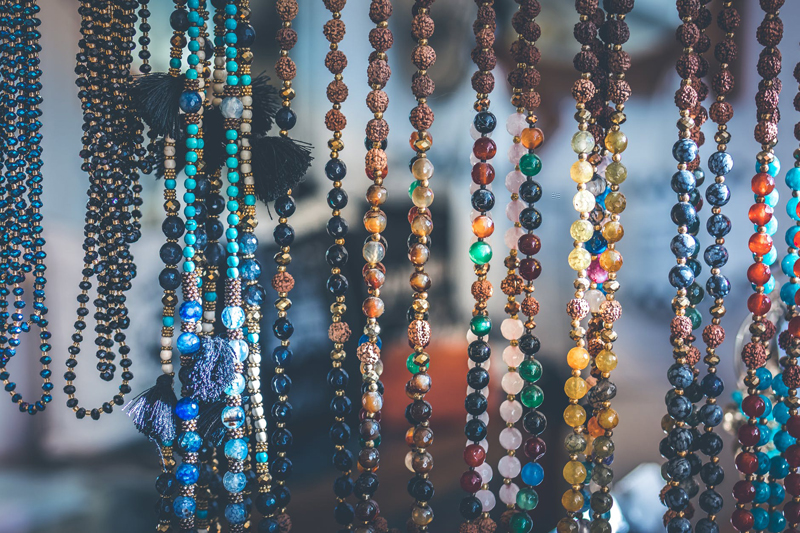Stringing an Adjustable Choker


We all have special beads that we bought without any plan. Beads we fell in love with for the color or shape. In my collection, a lot of them are by local polymer clay artist Karen Ottenbreit (there is a link to her webpage at the bottom of the article). She does beads and sculptures with wit and whimsy. Sly looking ravens, happy frolicking magpies, and right around Halloween, at one local bead show, she always has something for Halloween.
I named that bead Bart the Brat as soon as I saw it. It has a big cheesy grin and sharp looking eyes. He looks like he's ready to get into trouble. The eye bead was also made by Karen, and it glows in the dark.

As much as I love seed bead weaving, stringing also has it's place. This is simple symmetrical stringing, the easiest kind. It showcases the two beads so they take center stage.
In this example, it's a lot simpler, pearls frame a simple bright red bead. I made this for a close friend who loved the bead and wanted something very simple. The red bead nested perfectly in the base of her throat.

To string an adjustable choker you will need:
- Beads- you'll plan it out according to your tastes. For this necklace, I used mostly 5 mm fire polished rounds, size 11 red seed beads, red accents and black 4mm bicone accents.
- Accent beads for the chain
- Chain- you want a largish chain. It has to be big enough for the clasp. Curb chains or twist curb chains work best.
- Lobster claw clasp to match your chain, check it to make sure it will go into a link easily.
- Head pins and eye pins to match your chain
- Softflex™ beading wire
- crimp beads to match your chain
- Crimp covers if you'd like
- Round nose pliers
- Chain nose pliers
- crimping pliers
- Ruler
First you'll decorate the chain. There is no reason in handmade jewelry for the back of a necklace not to be a design element. A nice drop of beads makes a pretty accent when you're wearing your hair up. Cut a piece of chain between 4 and 6 inches long. Decide on what kind of drops you want on the chain, and make the drop for the chain. Wrapped Loop Instructions
For my necklace, there is one eye beaded eye pin and one beaded head pin for a nice drop.
Cut a piece of Softflex™ about 18 inches long for a larger neck, or 16 inches for a small neck. Attach it to the unbeaded end of the chain with a crimp tube. I prefer to have about an inch on the short end to thread through beads. Measure your focal bead if you're using one. For a smaller choker, generally about 12 inches long is a good size. For a larger choker, 14 inches long. The chain will adjust well after that. So if you're making a larger choker size, you'll want to subtract the width of your focal bead from 14 inches, then divide that number by 2 for the length each side should be.
String the beads, measuring occasionally until you've reached the halfway point figured. Put on your focal bead, and then repeat the stringing pattern from the first half to match in mirror symmetry.
For my necklace, I added 2 chain accents to hold a bail with the eyeball bead on it in the stringing.
When you get to the opposite end, string on a crimp bead, and attach the clasp. Thread back through some of the beads and clip close, then close the crimp.
The lobster claw just goes into which ever link on the chain is most comfortable to wear.
The focal beads in the bat and eye ball necklace came from Fish Lips and Bird's Teeth Studio.
The chain, bail, crimps, head pins and eye pins all came from Prima Bead
The rest of the beads were from my stash.
You Should Also Read:
Basic Beading- Making Loops with Wire
Silver Rose Necklace
Book Review - A Bead in Time

Related Articles
Editor's Picks Articles
Top Ten Articles
Previous Features
Site Map
Follow @shala%5Fbeads
Tweet
Content copyright © 2023 by Shala Kerrigan. All rights reserved.
This content was written by Shala Kerrigan. If you wish to use this content in any manner, you need written permission. Contact Shala Kerrigan for details.







